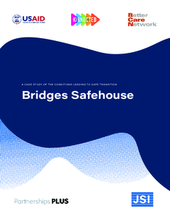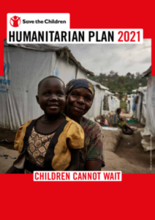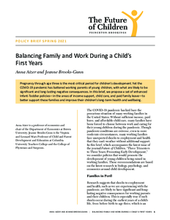Demographic Data
|
Sources: World Bank, UNICEF,UNDP HDR 2015, DHS 2014 |
Displaying 2981 - 2990 of 14348
These working methods aim to facilitate and promote the meaningful participation of all children, particularly those in disadvantaged or vulnerable situations, in days of general discussion.
The New Neighborhood is a limited series podcast that explores some of the dramatic changes taking place across the U.S. as people work to reinforce a sense of community, support young children and families, and work to build equity within communities.
Lighthouse Children’s Village was established in 2004 as a privately-run and privately-funded residential care institution. In 2014, its long-time principal donor made the decision to phase out of financially supporting institutional care. This case study highlights some of the early warning signs and subsequent discovery of unethical and criminal behavior that can sometimes be observed in a transition process.
This case study highlights some of the key dynamics that arose throughout one organization's process of transitioning their services from residential care to non-institutional programming and examines how those dynamics both influenced the transition and determined the type of support provided, as well as the most appropriate transition strategy. The case study is organized around the various stages of transition and explores some of the key themes outlined in the Transitioning Models of Care Assessment Tool.
This case study highlights some of the prerequisites for the starting point of a successful transition from residential care to a non-residential model, many of which are often overlooked or underestimated. The case study is organized around the various stages of transition and explores some of the key themes outlined in the Transitioning Models of Care Assessment Tool.
In this How We Care series, Family for Every Child presents the programming of three CSOs on how they are supporting kin carers and the vulnerable children in their care, in their respective regions.
Through a diverse range of examples of how people are meeting the challenge of responding to the effects of this public health emergency, CELCIS hopes to record, reflect on, inform, and inspire others about the impact that these are having in the lives of care experienced children and young people, and all those who work and volunteer across public and voluntary services to support them.
In this Humanitarian Plan, Save the Children lays out its response to the COVID-19 crisis, which is designed to directly support and advocate for children’s right to survive, learn and be protected, and will be delivered through a multi-sectoral response to children’s needs arising from the wide-ranging impacts of COVID-19 on children’s rights.
This report presents child protection data from March to September 2020 (covering the ‘first wave’ of COVID-19 restrictions for Australia, and part of the ‘second wave’ of restrictions for Victoria) with comparisons to the same period in 2019.
In this brief, the authors propose a set of enhanced Infant-Toddler policies—in the areas of income support, child care, and paid family leave—to better support families and improve their children’s long-term health and wellbeing.







